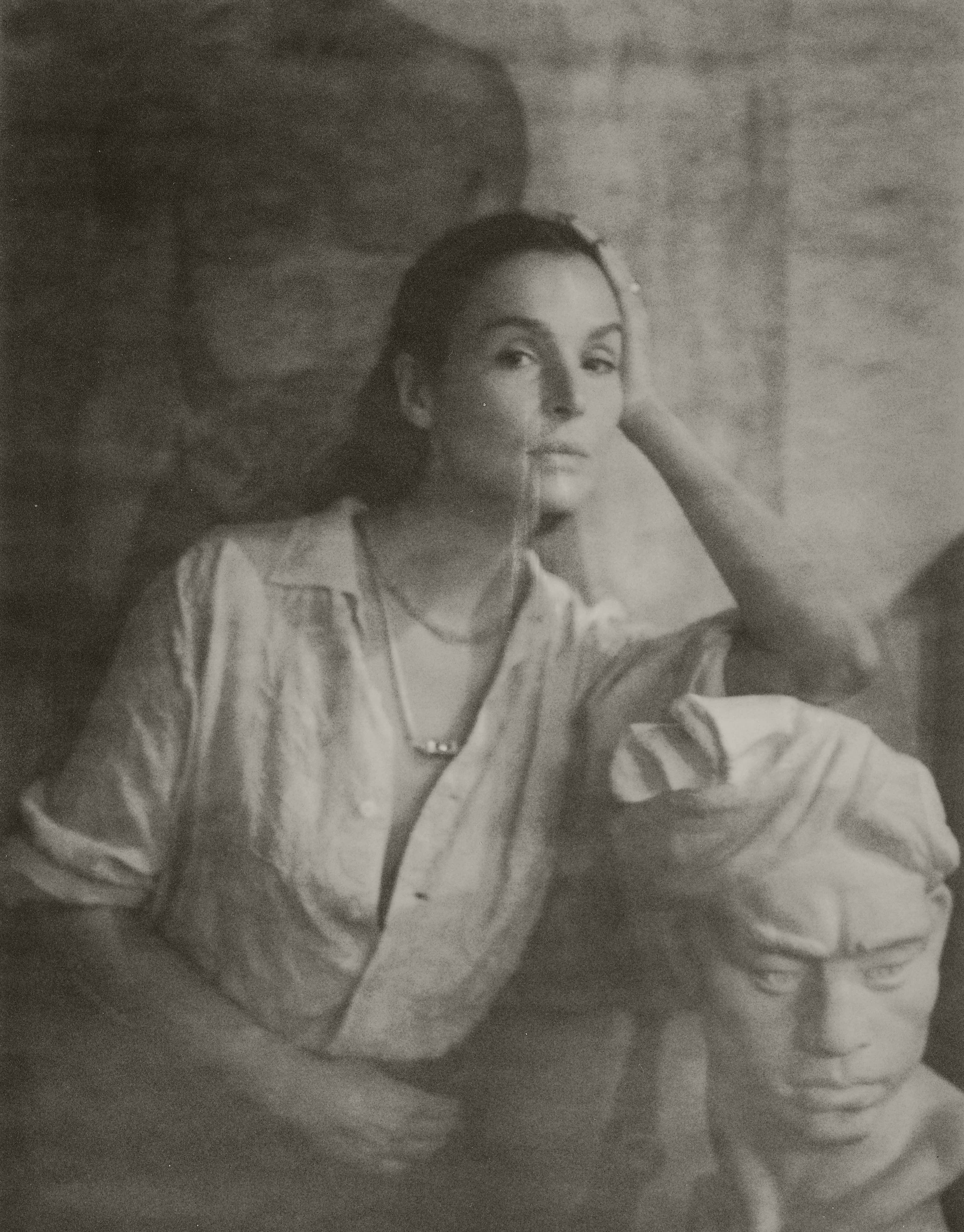In conversation withMarie Lichtenberg
Designer Interview
10·03·2023
Paris designer Marie Lichtenberg's world is full of color and light; its Sixties space-race glam, Seventies psychedelia, the extravagant blooms of exotic flowers, and sun-kissed skin on Caribbean beaches. Her jewelry is all about love letters picked out in sunny yellow gold chain, a bold rainbow of enamel, and endless silk Mauli cords stacked around the neck, fastened with locket clasps that are intricately worked and supremely beautiful.
After over a decade of working as a fashion editor for a French glossy magazine, since 2018 Marie has been channeling her creativity into designing meaningful fine jewelry and seeking out the rare talents capable of producing each piece. Inspired by the culture of Martinique and her family roots, she delves deep into her personal history to design contemporary love tokens, blending artisan inspiration from India with the finesse of her Parisian style sensibility. The term 'contemporary heirloom' is over-used and abused these days, but this truly is jewelry designed to carry emotion into the future, encapsulating a part of a person to be handed down to future generations.
Her locket clasps require the dexterity of master craftsmen, chains are handmade in Italy, and painstaking enameling brings to life messages like 'love you to the moon and back', 'prayers go up, blessings come down', 'vivons heureux, vivons cachés' and 'eye will protect you forever'. On necklaces, bracelets, and charms, she explores symbols of luck and protection ranging from the evil eye to the four-leaf clover, honoring her family's Caribbean roots with her signature oversized forçat chain and coco satin finish.
Her most recent collection has raised the bar for intricacy to include beautifully engineered box lockets and orb pendants that open to reveal secrets, delicate Indian gem-set gold flower chains, and diamond rivière chains holding exquisite micro lockets. Marie shared some of the personal jewelry stories that inspired her label and told us more about why craftsmanship is so important to her.
Which is more important in your work, craftsmanship or design?
I think it’s a virtuous circle, as they both serve each other mutually. Craftsmanship helps us to take our creative process further while having the support of talented jewelry craftsmen is what makes our designs exceptional.
“ I received my first locket from my mother as a teen, which sparked the connection I have to the emotional value of the jewelry. “
Your latest collection takes the artisanship even further, with more intricate enameling, stone-setting, and chain-making. How important is it to you, to use authentic expertise in production?
We call on some of the finest ateliers in the world for production and find the best experts for each new skill we require. Sourcing highly talented jewelry craftspeople is important to us, because they are a guarantee of long-lasting quality, and we want my designs to become jewels that are passed down from generation to generation.
How does your jewelry explore the idea of transmission and what we hand down through the family tree?
This idea is the foundation for the entire brand story, which was inspired by the forçat chains of my mother's Martiniquan roots, symbolic hollow gold chains with bold locket clasps that celebrate emancipation in Creole culture. I received my first locket from my mother as a teen, which sparked the connection I have to the emotional value of the jewelry. Years later, it would also lead me to explore what I would like to pass on to my daughter in turn, and my brand was born of that thought process.
Personally speaking, what piece of jewelry do you never take off?
A diamond necklace I bought from an antique dealer in India.
Who - real or imagined - would you like to see wearing your jewelry?
Elvis Presley!
